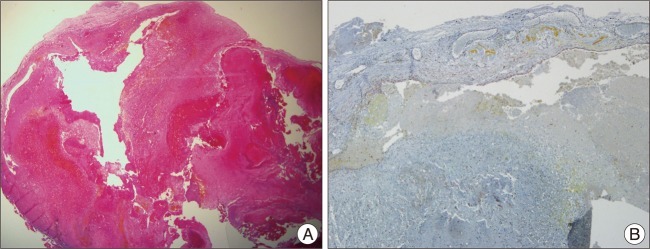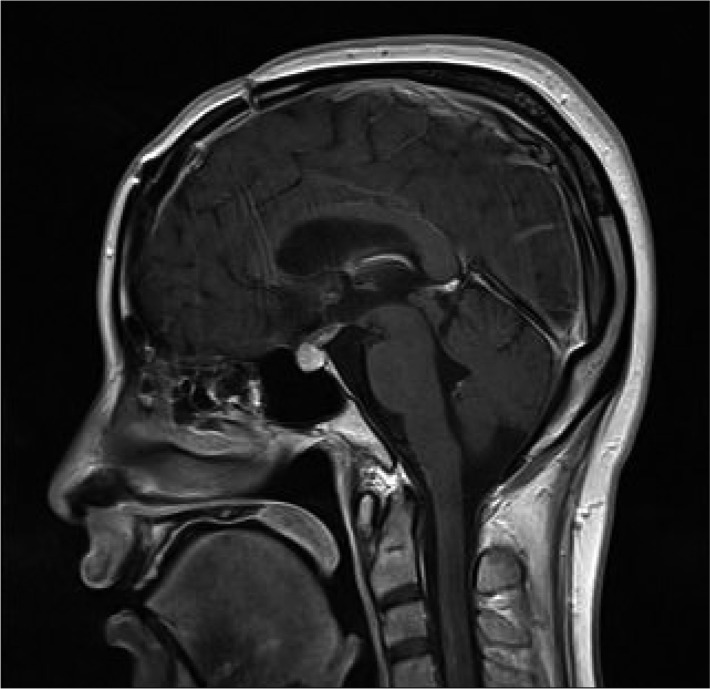J Korean Neurosurg Soc.
2012 Aug;52(2):144-147. 10.3340/jkns.2012.52.2.144.
Intraventricular Cavernous Hemangiomas Located at the Foramen of Monro
- Affiliations
-
- 1Department of Neurosurgery, Ilsan Paik Hospital, College of Medicine, Inje University, Goyang, Korea. lbjguni@hanmail.net
- KMID: 2190554
- DOI: http://doi.org/10.3340/jkns.2012.52.2.144
Abstract
- Intraventricular cavernous hemangiomas are uncommon. Among them, those occurred at the foramen of Monro in the third ventricle may be of particular interest because of its rarity, development of hydrocephalus, being differentiated from other brain lesions. We present a rare case of intraventricular cavernous hemangioma at foramen of Monro which was resected through microsurgery and also review the relevant literatures.
Keyword
MeSH Terms
Figure
Reference
-
1. Chen CL, Leu CH, Jan YJ, Shen CC. Intraventricular cavernous hemangioma at the foramen of Monro : case report and literature review. Clin Neurol Neurosurg. 2006; 108:604–609. PMID: 15916846.
Article2. Clatterbuck RE, Eberhart CG, Crain BJ, Rigamonti D. Ultrastructural and immunocytochemical evidence that an incompetent blood-brain barrier is related to the pathophysiology of cavernous malformations. J Neurol Neurosurg Psychiatry. 2001; 71:188–192. PMID: 11459890.
Article3. Katayama Y, Tsubokawa T, Maeda T, Yamamoto T. Surgical management of cavernous malformations of the third ventricle. J Neurosurg. 1994; 80:64–72. PMID: 8271024.
Article
- Full Text Links
- Actions
-
Cited
- CITED
-
- Close
- Share
- Similar articles
-
- Erratum: Intraventricular Cavernous Hemangiomas Located at the Foramen of Monro
- A Method for the Localization of Normal Foramen of Monro in Korean
- Subcutaneous Cavernous and Capillary Hemangiomas of the Breast: Radiologic-Pathological Correlation
- A Case of Extradural Cavernous Hemangioma with Reuptured Disc
- A case of esophageal cavernous hemangioma





